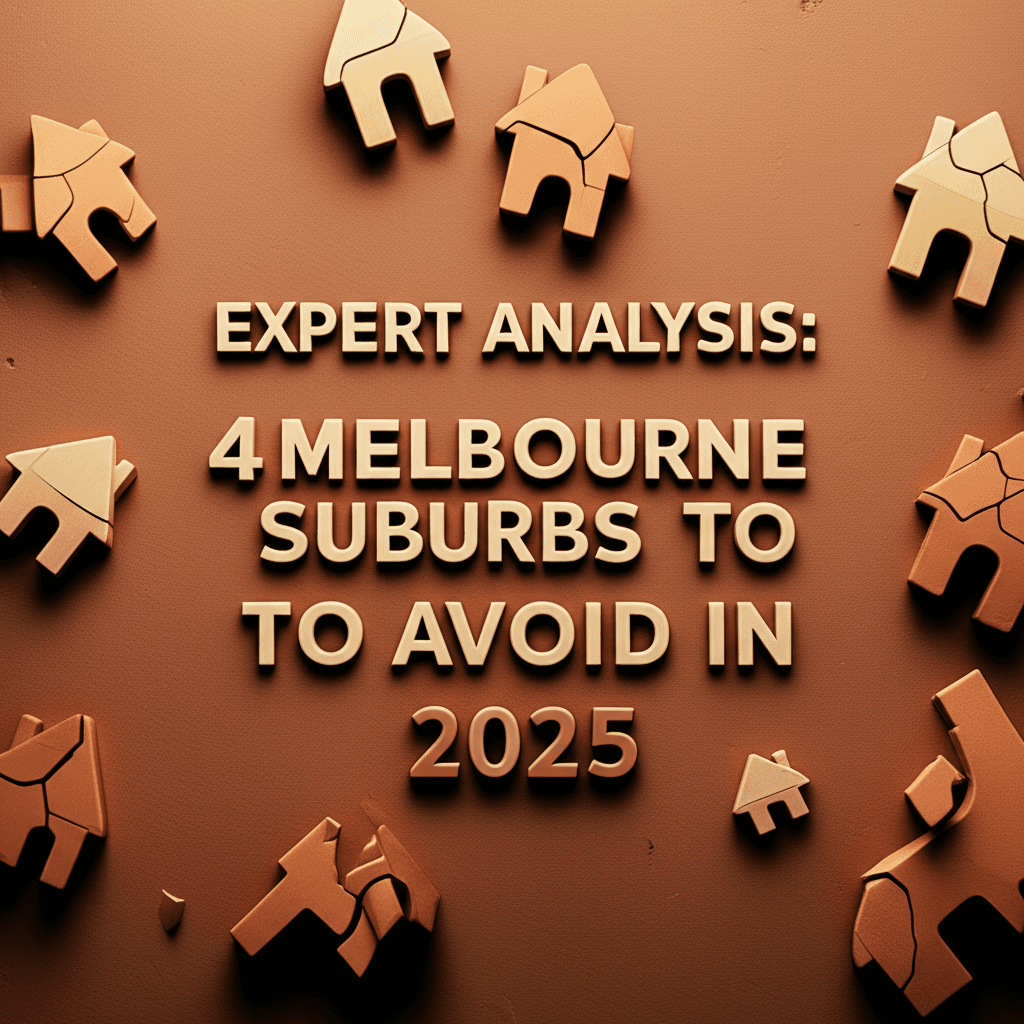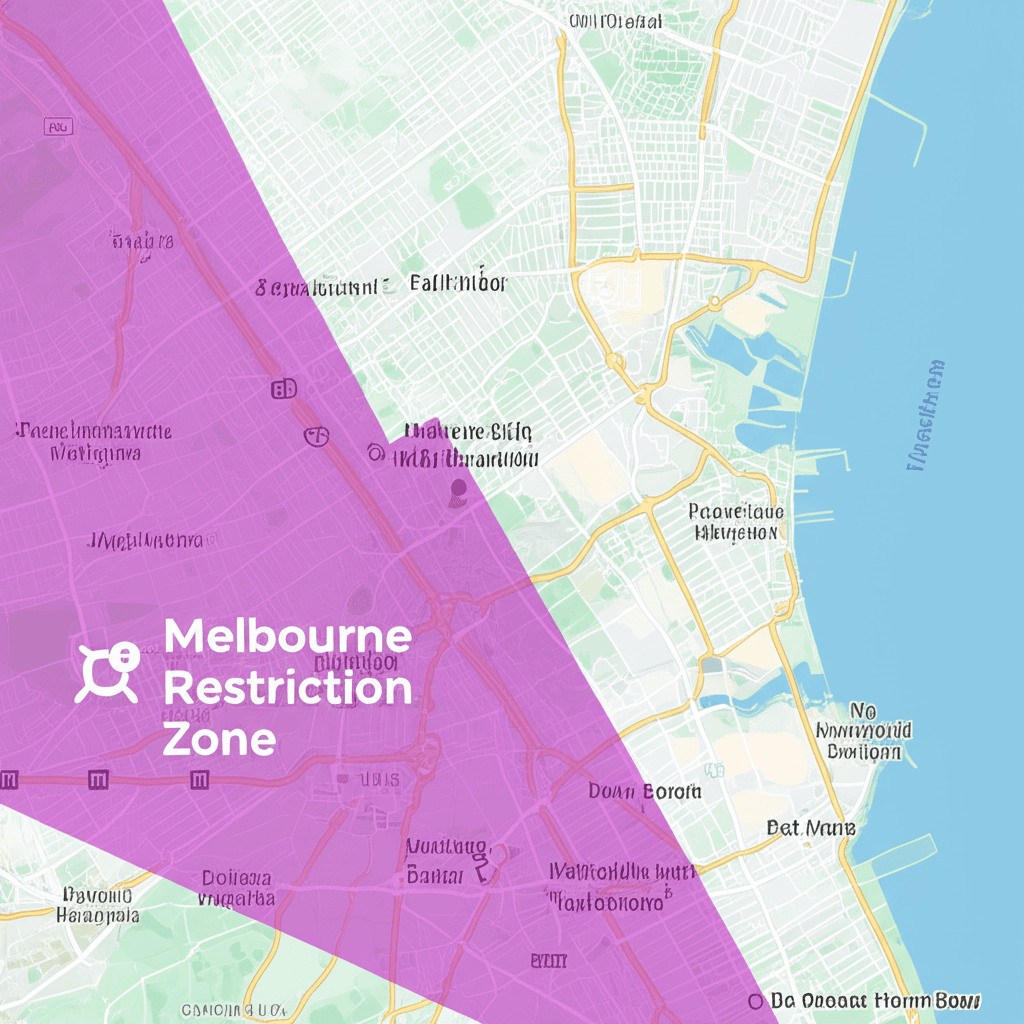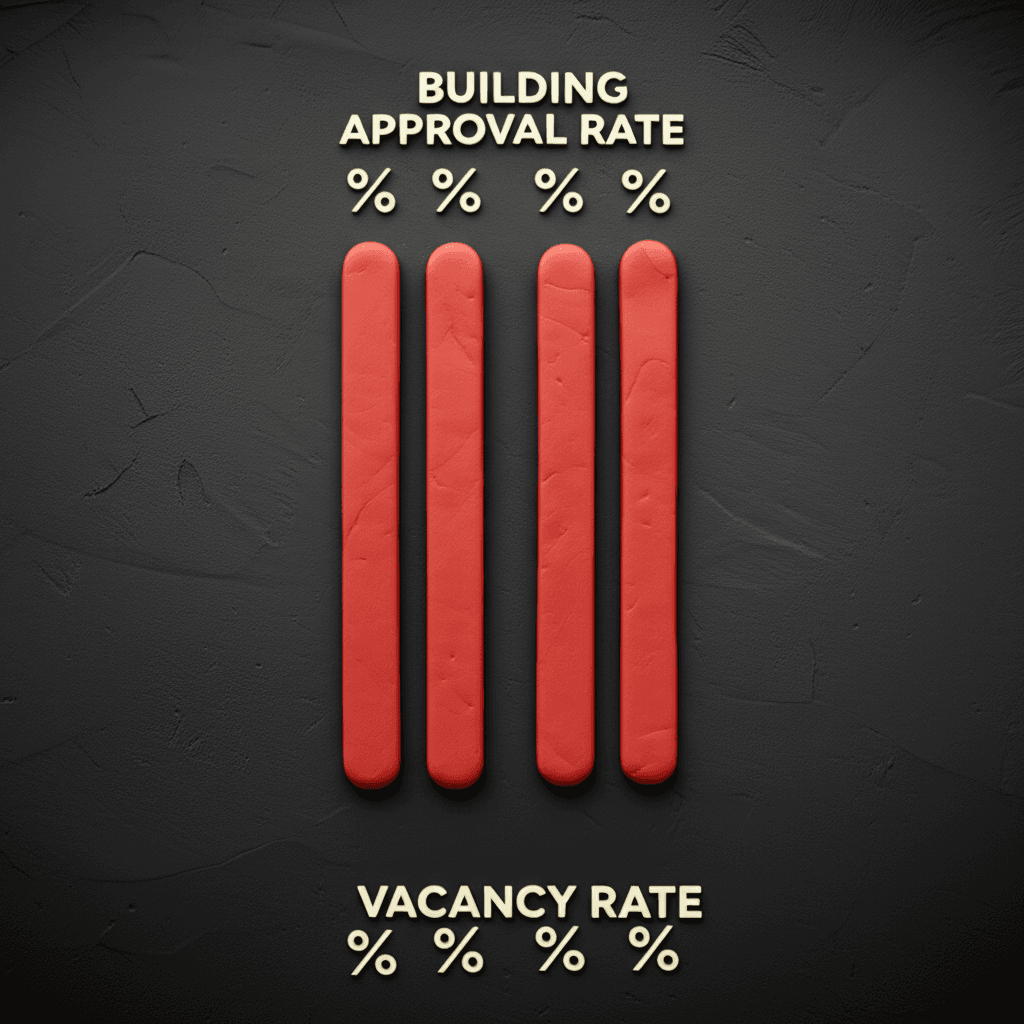Expert Analysis: 4 Melbourne Suburbs to Avoid in 2025
Four leading property experts reveal the high-risk suburbs and asset types that could derail your Melbourne investment portfolio this year.

Introduction
The Melbourne property market is buzzing with opportunity in 2025. While many investors are positioning themselves for significant gains, others might be unknowingly walking into serious financial traps. Navigating this complex landscape requires more than just identifying hotspots; it's crucial to understand which areas carry hidden risks that could stagnate your portfolio growth.
To help you make smarter, data-driven decisions, we've distilled insights from four of Australia's top property investment experts. They pinpoint the specific suburbs and property types in Melbourne that they believe are the worst places to put your money right now, explaining the critical data points and fundamental flaws behind their reasoning.
1. The Blue-Chip Trap: Why Expensive Suburbs Can Stunt Growth
Expert: Simon Loo, Founder of Housefinder
Areas to Avoid: High-end, established blue-chip suburbs like Toorak, Hawthorn, Kew, and Canterbury.
While owning a property in a prestigious suburb sounds like a guaranteed win, Simon Loo argues it's a trap for investors focused on portfolio growth. The primary issue is 'holdability.' These properties come with extremely low rental yields, often below 2%. For example, a $2 million house might only generate $700-$800 per week in rent, resulting in a staggering negative cash flow of around $80,000 per year after expenses. This immense financial drain not only strains your personal finances but severely limits your borrowing capacity, effectively putting a brake on acquiring more properties.
Loo's strategy hinges on acquiring multiple, more affordable properties with healthier cash flow. The growth from $500,000 to $1 million is often easier and faster to achieve than from $2 million to $4 million, as the former is accessible to a much larger pool of buyers. For sustainable portfolio growth, the ability to hold and continue buying is paramount, a feat made nearly impossible by the cash flow demands of premium blue-chip assets. You can uncover suburbs with a healthier balance of growth potential and yield using powerful analytical tools available on HouseSeeker's Real Estate Analytics Hub.

2. The Planning Overlay Pitfall: A Hidden Risk Near Melbourne Airport
Expert: Oliver Cheung, Founder of Inside
Areas to Avoid: Houses on large blocks in specific pockets of Dallas, Kuleru, and Broadmeadows affected by the Melbourne Airport Environmental Overlay.
What looks like a developer's dream—a large 600sqm+ block with subdivision potential—can quickly become a nightmare in certain areas near Melbourne Airport. Oliver Cheung highlights a critical but often overlooked factor: restrictive planning overlays. These zones, particularly the highly restrictive 'Schedule 1', can outright prohibit any subdivision. You could pay a premium for a large block only to discover its development potential is zero.
Even in the less restrictive 'Schedule 2' zones, where subdivision to a minimum of 300sqm lots is possible, developers face another hurdle: mandatory and expensive noise-mitigation measures. Compliance with Australian Standard AS 2021 requires costly upgrades like acoustic-rated vents, double-glazed windows, and specialised wall insulation. These are purely compliance costs that add thousands to your build without adding any resale value, significantly eroding your profit margins. Failing to perform this due diligence can turn a promising value-add project into a financial dead end. An advanced tool like HouseSeeker's AI Property Search can help filter for properties with genuine development potential, steering you clear of hidden restrictions.

3. The Oversupply Issue: House and Land Packages in Rockbank
Expert: Junge Ma, Lead Research Analyst at Investigate
Area to Avoid: House and land packages in Rockbank, located in the Melton LGA.
Junge Ma points to a perfect storm of negative data points brewing in Rockbank, making new house and land packages there a high-risk investment. The area is grappling with a massive oversupply of new housing stock. The building approval rate is over 30%—a stark contrast to the balanced market level of 2-3%. This flood of new properties has pushed the rental vacancy rate to an alarming 14%.
For an investor, this means intense competition for tenants, downward pressure on rents, and extended vacancy periods, all of which cripple your cash flow. Furthermore, the yields on these new properties are deceptively low. While the suburb's average yield might seem acceptable at 4.2%, new builds often achieve just 3.5-3.9%, a poor return for a brand-new asset. With so much supply constantly coming online in a market that is already growing slowly, the prospects for short-to-medium term capital growth are exceptionally weak.

4. The Affordability Mismatch: When Investor Hype Outpaces Local Reality
Expert: Dawn Fouhy, Founder of Future Proof Property Advisory
Area to Avoid: Houses in Broadmeadows.
Dawn Fouhy issues a caution against buying into the investor-driven hype in Broadmeadows. While it appears affordable to interstate buyers, it is critically unaffordable for the local demographic. The average household income is approximately $1,100 per week, while mortgage repayments on a median-priced house are around $960 per week—consuming nearly 90% of local income. This fundamental disconnect is a major red flag.
The market is currently being propped up by a frenzy of investors, with some agents reporting that 60-80% of buyers are from out of state. This creates a speculative market that lacks a solid foundation of owner-occupiers who drive long-term, sustainable growth. Once the investor demand cools, who will you sell to? The local population cannot afford the current prices, posing a significant risk to future capital gains. Gentrification is not driven by investors, but by a rising class of owner-occupiers with disposable income—a trend that is not yet happening on the ground in Broadmeadows. A service like the HouseSeeker AI Buyer's Agent can help identify areas with strong local economies and genuine owner-occupier appeal.

Conclusion
Investing successfully in Melbourne's 2025 market requires a strategic, data-led approach. The insights from these experts provide a clear roadmap of what to avoid:
Ultra-low yields in blue-chip suburbs that kill cash flow and borrowing power.
Hidden planning overlays near the airport that nullify development potential.
Oversupplied new build estates like Rockbank with crippling vacancy rates.
Investor-heavy markets like Broadmeadows where local affordability is unsustainable.
By steering clear of these potential traps, you can protect your capital and focus on acquiring properties with strong fundamentals poised for long-term growth.
Ready to find high-performing properties and avoid the pitfalls? Dive deep into market trends with HouseSeeker's Real Estate Analytics Hub and make data-driven decisions for your next investment.
Frequently Asked Questions
Are all blue-chip suburbs bad investments?
Not necessarily for those buying a primary residence, but for investors focused on building a multi-property portfolio, the extremely low yields and high holding costs can be a significant barrier. The negative cash flow often prevents them from securing finance for future purchases, thereby stunting portfolio growth.
How can I check for planning overlays on a property?
Always conduct thorough due diligence. You can use state government planning portals like Victoria's VicPlan online to check for overlays on any address. Furthermore, these restrictions must be disclosed in the Section 32 (Vendor's Statement) provided during the sale process, which should be carefully reviewed by your conveyancer.
Is buying in an investor-heavy area always a bad idea?
A high concentration of investors can be a major risk factor. A healthy, stable property market relies on a strong base of owner-occupiers who create community, maintain properties, and provide a stable demand floor. Markets driven primarily by investor speculation are more volatile and susceptible to downturns when sentiment changes.
